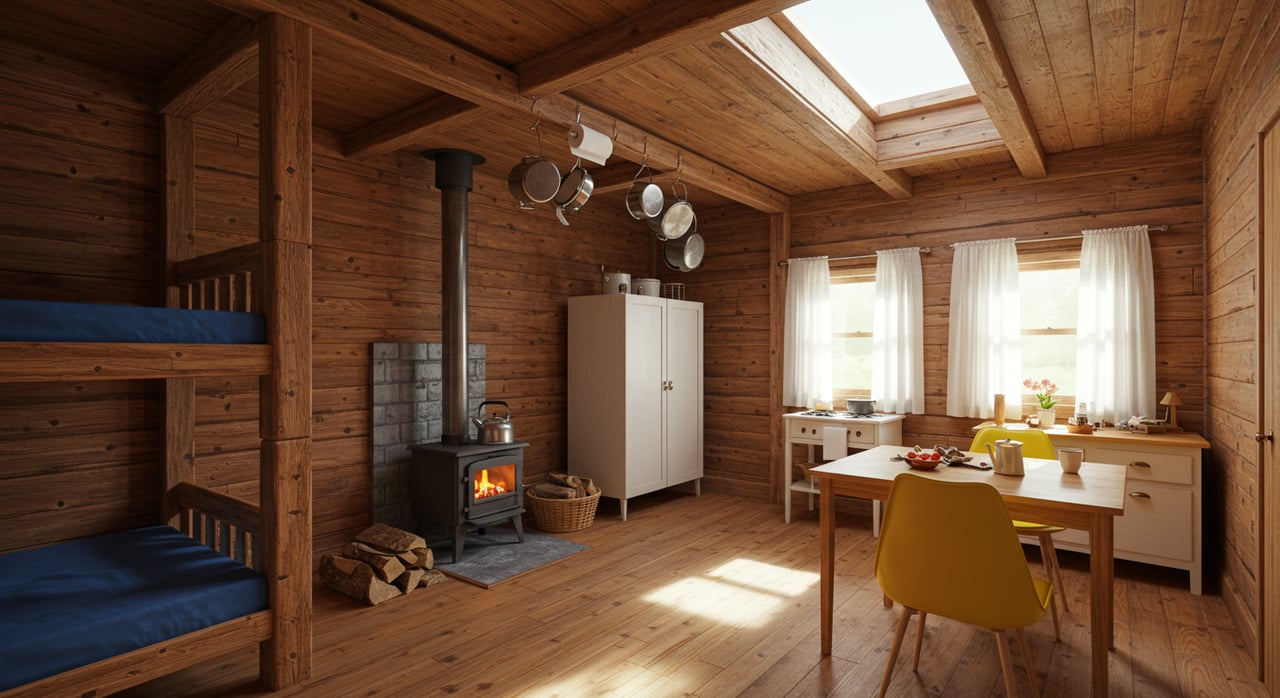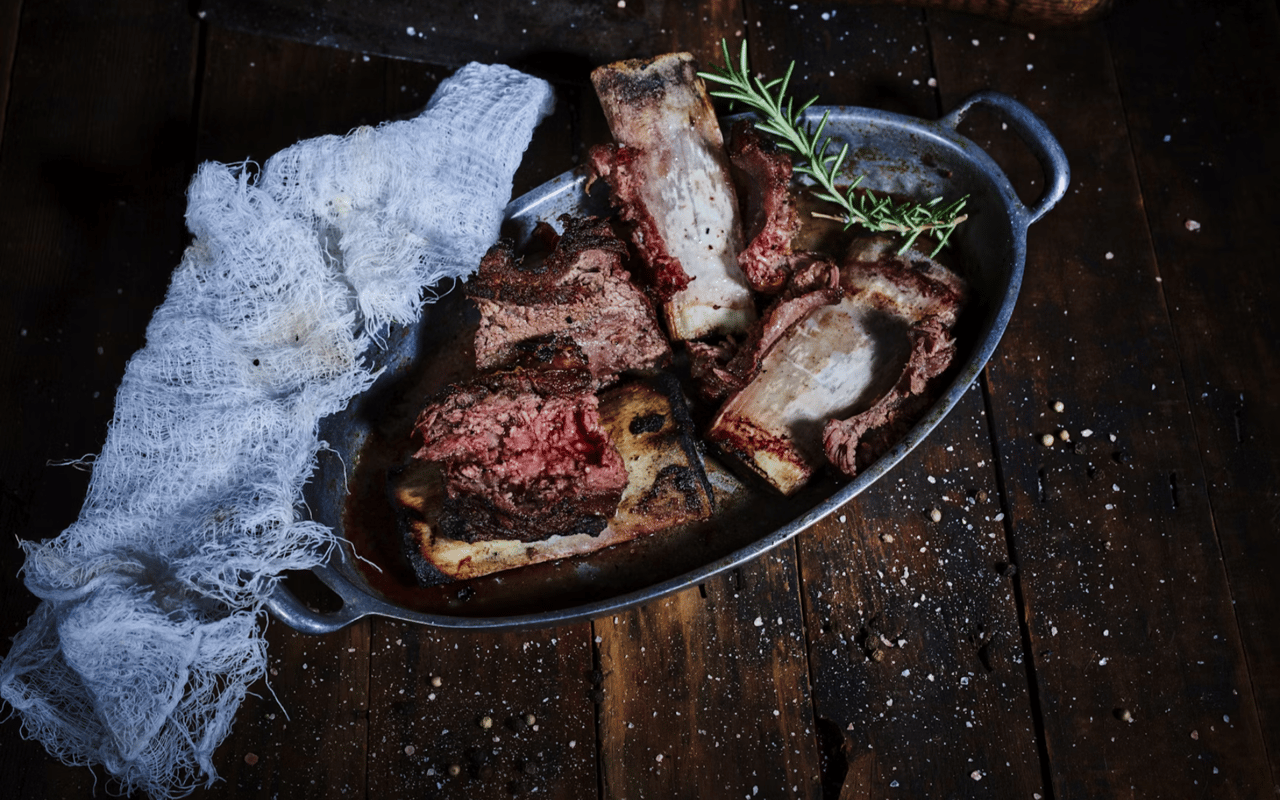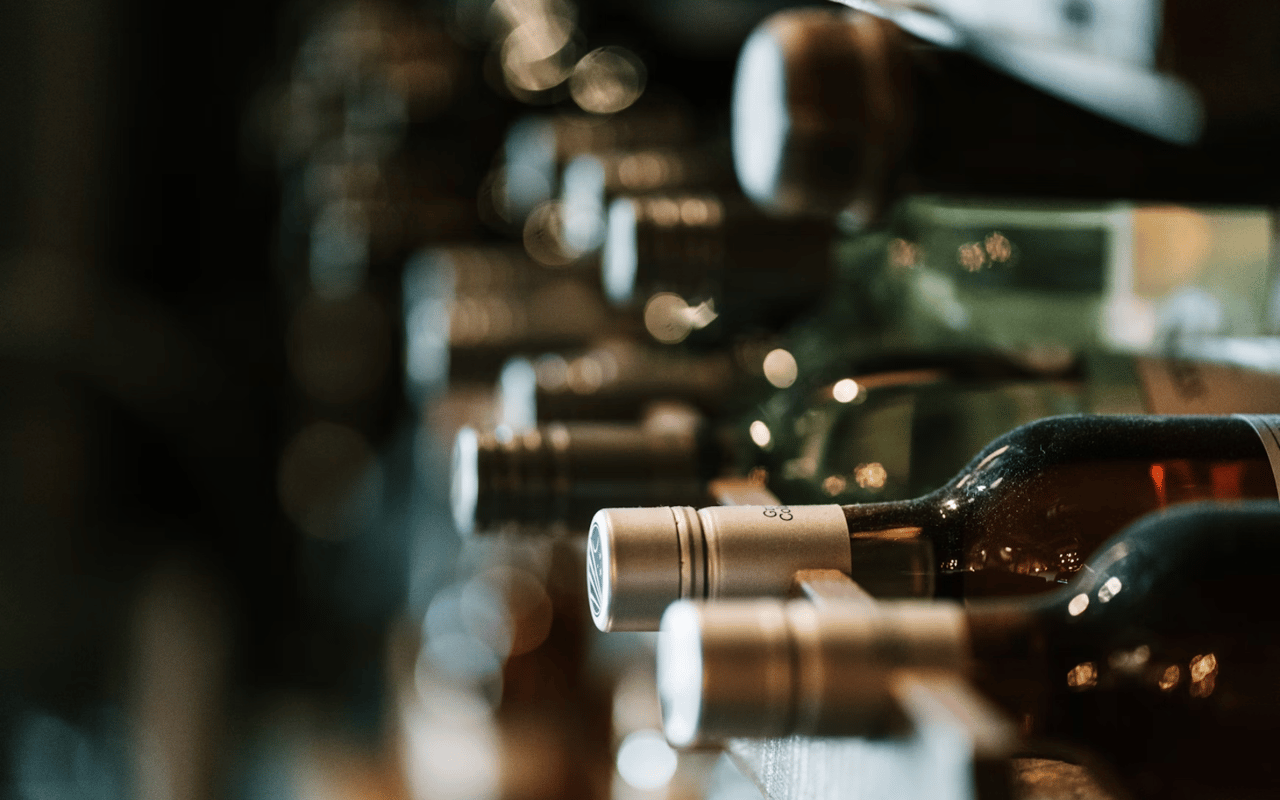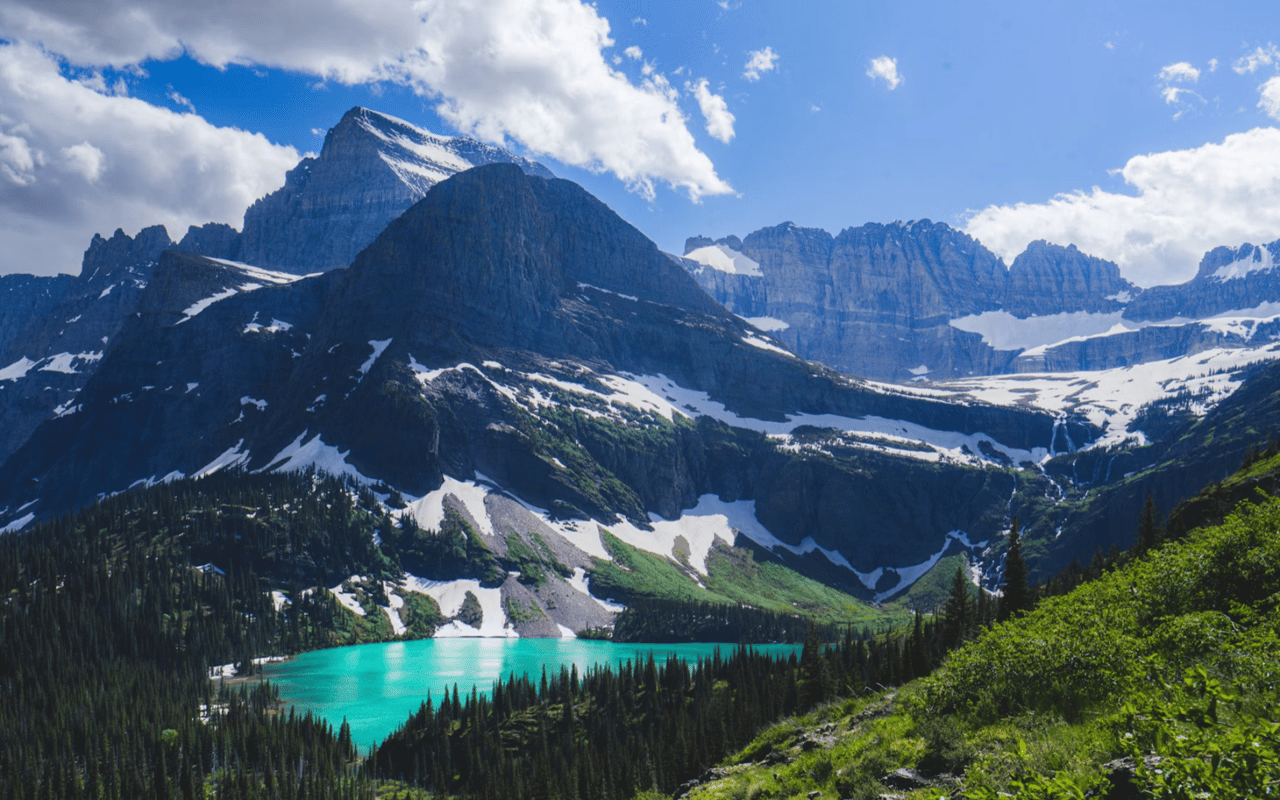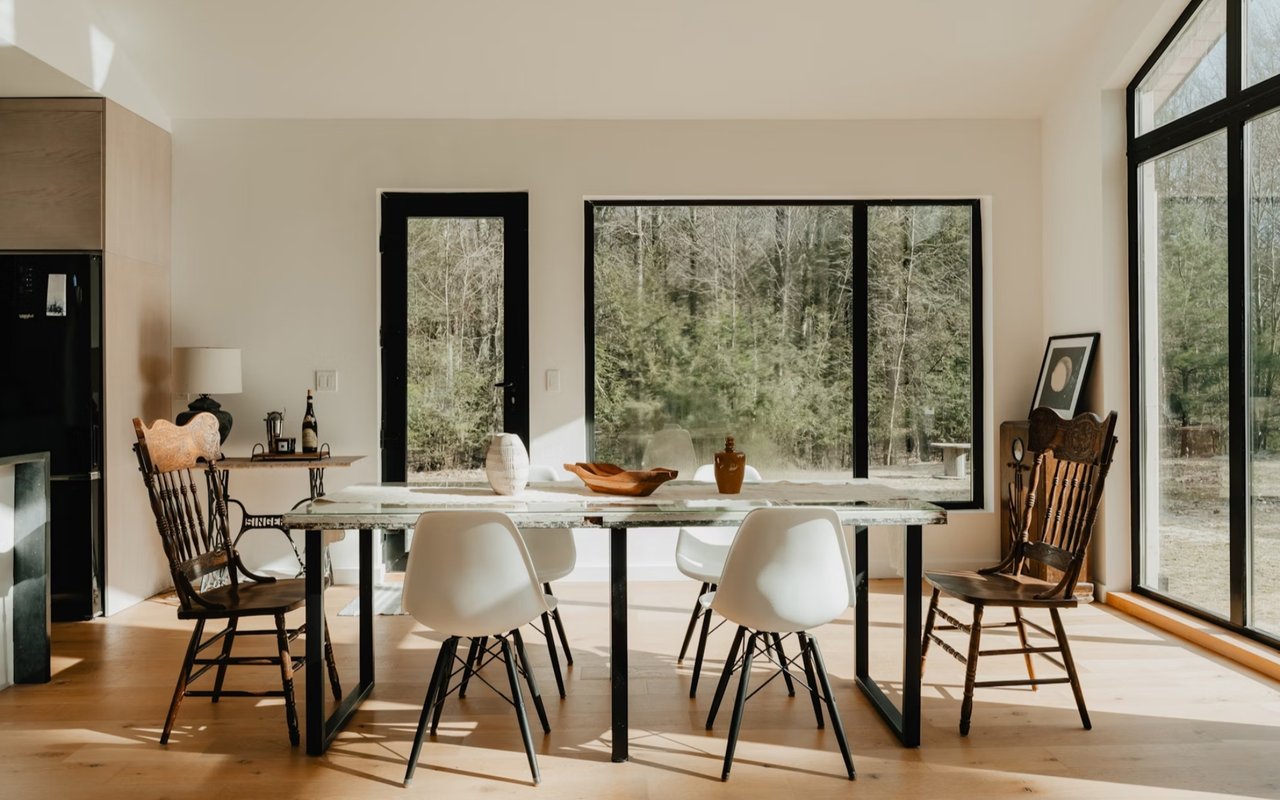Off-grid living in Montana is a rewarding way to embrace self-sufficiency and sustainability. With the right tools and systems in place, you can generate your own power, source your own water, and live independently from public utilities. Whether you're interested in partially or fully going off the grid, Montana's natural resources and diverse housing options make it an ideal location for this lifestyle. By adopting off-grid living, you can enjoy the freedom and peace of mind that comes with being more in control of your own resources and living in harmony with nature.
Here’s a closer look at what off-grid living entails and how you can get started.
What is the grid?
The grid is the network of public utilities that provide electricity, water, and other essential services to homes and businesses. This system connects millions of households nationwide to power plants, water systems, and waste management facilities. When you live off the grid, you intentionally disconnect from these traditional utility services. Instead of relying on public power or water, you generate your own energy and manage your resources independently.
Why go off the grid?
There are many reasons why people choose to pursue off-grid living. One of the most common motivations is the desire for independence. By generating energy and sourcing water, you are no longer dependent on public utility companies. This freedom allows you to live where you want, often in more remote or rural areas, without worrying about whether utilities are available.
Off-grid living also appeals to those who are environmentally conscious. For example, producing your own energy through solar or wind power significantly reduces your carbon footprint. It’s also a way to live more sustainably, as you are more likely to conserve resources when you are responsible for producing and managing them yourself.
Off-grid living also appeals to those who are environmentally conscious. For example, producing your own energy through solar or wind power significantly reduces your carbon footprint. It’s also a way to live more sustainably, as you are more likely to conserve resources when you are responsible for producing and managing them yourself.
The difference between partially and entirely off the grid
When exploring off-grid living in Montana, it’s essential to understand the distinction between going partially off the grid and fully off the grid. Partially off-grid living means you may still rely on some public utilities, like water or sewage, while generating electricity. This approach allows for more flexibility and may be an easier transition for those new to off-grid living.
On the other hand, fully off-grid living means total independence from all public utilities. This includes generating your own power and sourcing your own water, managing waste, and possibly even producing your own food. While fully off-grid living requires more planning and investment, it offers complete autonomy and can be deeply rewarding for those committed to this lifestyle.
On the other hand, fully off-grid living means total independence from all public utilities. This includes generating your own power and sourcing your own water, managing waste, and possibly even producing your own food. While fully off-grid living requires more planning and investment, it offers complete autonomy and can be deeply rewarding for those committed to this lifestyle.
Tools to go off the grid
Going off-grid successfully requires the right tools and infrastructure. The most important components of off-grid living include systems for generating power, collecting water, and managing waste. Solar panels, wind turbines, and backup generators are common tools for producing electricity. For water, off-grid homes often rely on wells, rainwater collection systems, or natural water sources. Waste management can be handled through composting toilets or septic systems.
Solar power
Solar power is one of the most popular methods for generating electricity in off-grid living. With Montana’s abundance of sunny days, many residents find solar panels an effective and reliable way to produce the energy they need. Solar systems can be tailored to meet the specific needs of your home, whether you’re looking for a small system to power essential appliances or a more extensive setup to run your entire household. Once your system is set up, solar panels can provide consistent energy without fuel or ongoing maintenance.
Wind power
Wind power is another viable option for generating energy in Montana, especially in areas that experience strong and consistent winds. Wind turbines can be installed on your property to capture wind energy and convert it into electricity. For those living in areas with frequent wind, turbines can supplement or even replace solar power, depending on your energy needs. Combining solar and wind power is a great way to ensure reliable electricity year-round, especially in Montana’s varied climate.
Water supply
One of the most critical aspects of off-grid living is securing a reliable water supply. Montana’s natural resources provide several options for off-grid water, including wells, rainwater harvesting, and nearby streams or rivers. Many off-grid homes are equipped with private wells, which can provide a steady source of fresh water. Rainwater collection systems are another sustainable option, allowing you to capture and store water for later use. Filtering and purifying the water is essential to ensure its safety, but with the proper setup, off-grid residents can enjoy an independent water source without relying on public utilities.
Generator
While many off-grid homes rely primarily on renewable energy sources, a generator is often a backup power source. In Montana, where winters can be harsh and unpredictable, having a reliable backup system is essential for those who want to ensure continuous power in case of extended cloudy days or low wind conditions. Many off-grid homeowners opt for fuel-efficient or dual-fuel generators that can run on propane or gasoline, giving them additional flexibility when needed.
How is off-grid living more sustainable?
Off-grid living is inherently more sustainable because it encourages people to be mindful of their resource use. When you are responsible for generating power and collecting water, you tend to use them more conservatively. Off-grid living also promotes using renewable energy sources like solar and wind, which have a much smaller environmental impact than fossil fuels.
Additionally, off-grid homes often incorporate eco-friendly building materials and designs that reduce energy consumption. Composting toilets, greywater systems, and efficient appliances contribute to a more sustainable lifestyle. By living off the grid, you are actively reducing your carbon footprint and contributing to preserving natural resources.
Additionally, off-grid homes often incorporate eco-friendly building materials and designs that reduce energy consumption. Composting toilets, greywater systems, and efficient appliances contribute to a more sustainable lifestyle. By living off the grid, you are actively reducing your carbon footprint and contributing to preserving natural resources.
Off-grid housing options
There are various housing options available for those looking to live off the grid in Montana. Many choose to build custom homes specifically designed for off-grid living, incorporating energy-efficient materials and sustainable design features. For those looking for a more turnkey solution, companies like Riverside Cabins offer prefab cabins well-suited to off-grid living. Other housing options include tiny homes, yurts, and even converted shipping containers.
About Heidi Lane
Ready to make your Montana real estate dreams a reality? Work with Heidi Lane, a Montana native with a deep passion for the state and a commitment to making your buying or selling experience seamless. Heidi treats every client like family, bringing dedication and personalized service to each transaction. Whether you're looking to find your dream home or close a deal, Heidi is there every step of the way.
With her local expertise and genuine love for Montana’s lifestyle, Heidi Lane is your trusted guide for all your real estate goals. Reach out today and start your journey with someone who truly understands what makes Montana special.
With her local expertise and genuine love for Montana’s lifestyle, Heidi Lane is your trusted guide for all your real estate goals. Reach out today and start your journey with someone who truly understands what makes Montana special.
